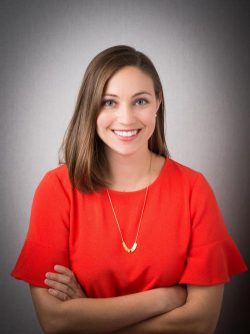Jessica Cook
Hammer Museum
Los Angeles, CA

Before graduate school I considered becoming a contemporary art curator or working in museum education, largely as a result of my wonderful experiences at UCLA’s Hammer Museum. I have worked at the Hammer as a docent through the Student Educator program on and off since 2012, when I was an undergraduate at UCLA. I knew the Academic Programs staff at the museum was interested in strengthening their educational ties to the university, but had not had the opportunity to dedicate resources to doing so. Through the department’s Mellon Internship Program, I proposed a special internship at the Hammer to create a campus partnership program. The goal of the program was to develop resources specifically designed for university course instructors in the humanities and social sciences. Given my focus as an interdisciplinary scholar, I also wanted to make arts education more approachable for a wider audience of college instructors and students.
My proposal was a success; and working closely with Theresa Sotto, the Associate Director of Academic Programs, I created a set of resources to help college instructors better access the Hammer’s collections. The biggest undertaking was a research and assignment guide (“Guide to Integrating Art in Humanities College Courses”; a free PDF is available via the Hammer’s website here) for the Museum’s Armand Hammer collection and Franklin D. Murphy Sculpture Garden.
The Armand Hammer collection, permanently on view at the Hammer Museum, is mainly composed of nineteenth-century French paintings, and includes significant works by artists including Paul Cézanne, Edgar Degas, Claude Monet, Gustave Moreau, Camille Pissarro, and Henri de Toulouse- Lautrec. The Murphy Sculpture Garden collection, housed on UCLA’s North Campus and managed by the museum, is an impressive collection with 70+ works on over five acres. It is especially strong in 20th century French and American sculpture, and includes work by luminaries like Hans Arp, Deborah Butterfield, Alexander Calder, Henri Matisse, and Auguste Rodin.
I leveraged my deep familiarity with both collections, garnered through years of research and discussion, to create an easily-accessible, tailored, and free resource that would scaffold the fundamentals of arts-integrated pedagogy. The guide provides essential background information about both collections, defines relevant art historical vocabulary, and provides guidance on when and how to integrate art into college courses. It also breaks the collections down by theme (including gender, interiority, space and scale, class, and labor, to name a few). The guide provides abstract questions that instructors can tailor for course discussions or assignment prompts, and gives a range of creative and analytical assignment suggestions by discipline. In creating the guide, I wanted to convey to fellow college instructors how intellectually useful artwork can be in the classroom, especially for introducing difficult material or illustrating transhistorical connections.
As part of this project Theresa and I also connected with campus entities including the English and Writing Programs departments, the EPIC Program, and the Office Of Instructional Development (OID). We presented the guide at several faculty meetings and at the campus-wide TA Conference in the fall of 2018.
My internship at the Hammer directly utilized many of the research and curriculum development skills I have developed as part of my English Ph.D., but using those skills in a new context proved very useful. For example, in formulating the program I created and presented a project proposal, developed presentations, and worked with members of the Hammer staff to conceptualize how my initial idea could work within their existing departmental goals. Checking in weekly or even daily about the project’s updates was quite useful and very different from working on my dissertation, where I suspect daily updates to my committee would (understandably) not be appreciated. I also gained invaluable mentoring experience from Theresa, from whom I learned many useful project management skills, and got to work as part of the Academic Programs team in a more intensive capacity.
While my primary goal is still to pursue a career in academia, getting a taste of the museum education world was a wonderful experience, and I am grateful to the Hammer Museum for supporting my endeavor. I certainly foresee using the Hammer guide in my own teaching for many years to come, and will look out for future opportunities to work with art institutions on interdisciplinary arts pedagogy.